Mojo Lens: All you need to know about the smart contact lens
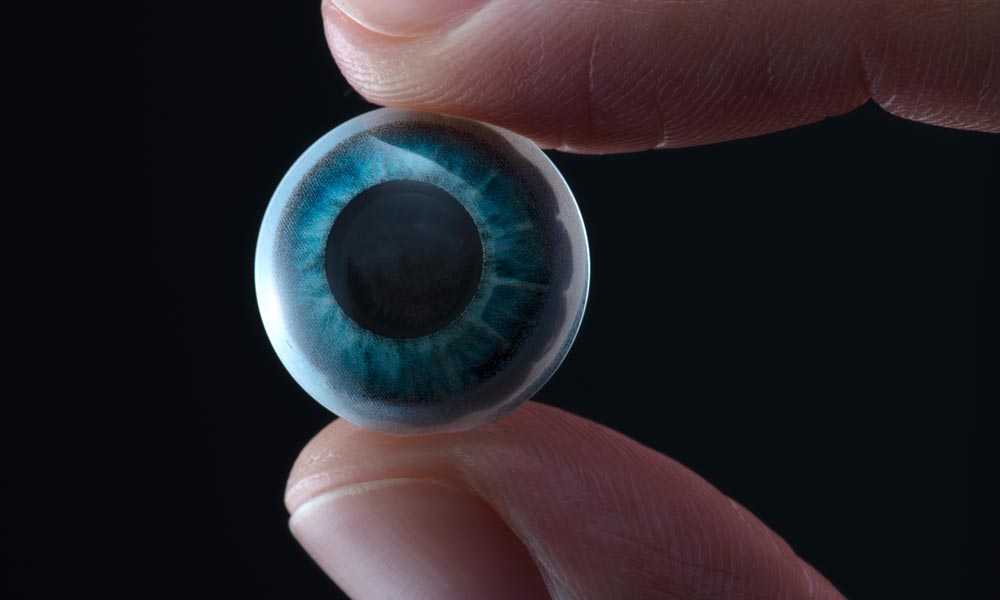
- Information on the "feature complete" prototype added - April 2022
Mojo Vision wants to make a great future vision of the AR industry come true: A tech contact lens that digitally augments the real world. I talked to the head of technology and co-founder Mike Wiemer.
Mojo Vision had already been working on a tech lens for around five years before the company first emerged in the public eye in November 2018 - with plenty of backing from a $50 million investment. The actual research and development around the idea of a tech contact lens started ten years earlier, according to Wiemer.
It wasn't until early 2020 that the startup made official what had previously only been hinted at: Mojo's big product is a smart AR contact lens that already exists as a prototype. Why the secrecy?
"We weren't allowed to say anything until we were sure it would work," Wiemer says. "It was exciting - and frankly a relief - to finally be able to talk about it, and we could finally talk to potential customers, partners and investors more easily."
Most recently, Mojo Vision pulled off a decisive maneuver, winning Japanese contact lens manufacturer Menicon as a partner.
Wiemer calls this partnership a "big step" and a "critical component" of strategy development for design, manufacturing and marketing. Together with Menicon, Mojo Vision now wants to pick up speed and bring the first smart contact lens to market.
Content
Venture capital: motivation and pressure at the same time
Mojo Vision's venture capital is around $205 million. Wiemer knows that enthusiastic investors are no guarantee of success. Of course, he knows stories like that of Magic Leap, the hyped AR startup that promised unprecedented technology and failed to deliver. In 2020, Magic Leap came within a hair's breadth of total bankruptcy - despite prior billion-dollar investments from companies like Google and Alibaba.
"Our fundraising success is both pressure and motivation. Developing the first true AR smart contact lens and all the groundbreaking technologies it requires is no small feat," says Wiemer.
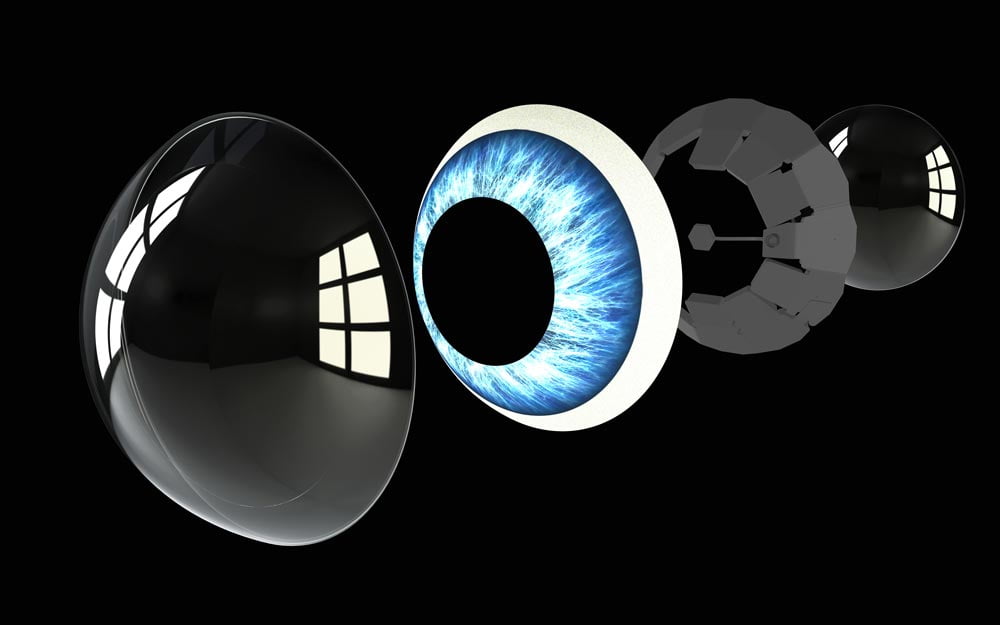
The Mojo lens consists of several layers. Among other things, sensors for motion detection and an image sensor are integrated. | Image: Mojo Vision
However, he is convinced of the daily progress and that the first Mojo Lens will successfully make the long journey to product maturity: "Many people believe in us and the potential of our platform."
This technology powers the smart lens
According to Wiemer, the current prototype can display text, graphics and videos - in other words, all common formats. Because the contact lens projects directly onto the retina, it works even when you close your eyes. According to Wiemer, control is via eye movements, so the display can be deactivated at any time.
At the heart of Mojo Lens is a MicroLED display with a pixel density of 14K. This is the smallest display with the highest pixel density ever built, Wiemer says. It was designed from the ground up for the contact lens and is about the size of a grain of sand.
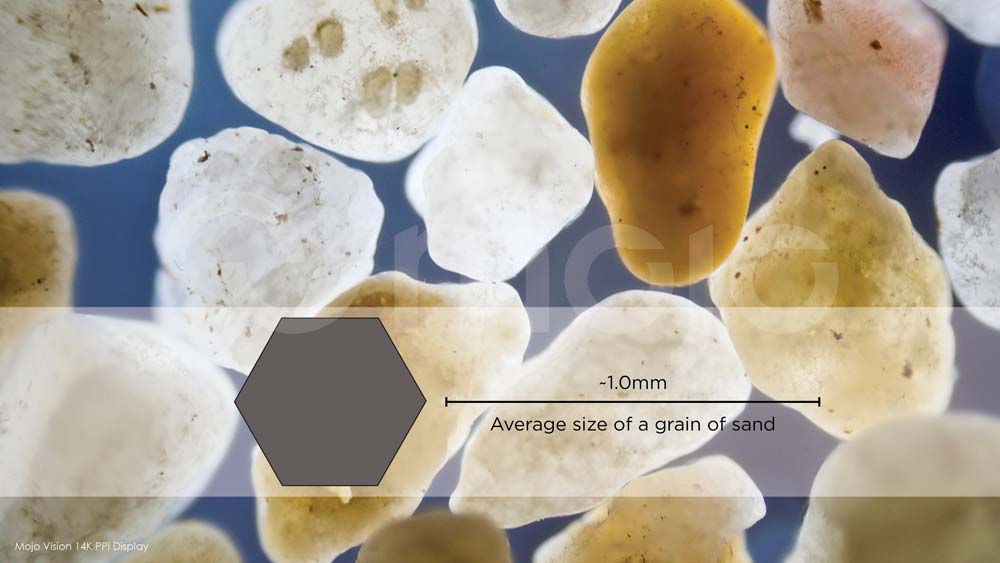
The Mojo Lens display is smaller than an average grain of sand. | Image: Mojo Vision
In reality, the eye constantly refocuses on different planes. The prototype does not support these numerous focus levels; the lens image is displayed in sharp focus throughout - whether you are looking into the distance or at an object close by. Mojo wants to mitigate the effect with software-level blur effects. Everyday use will show whether this is annoying.
Also integrated into the lens are motion sensors that stabilize the image and can determine the position of the image in relation to body and head movements. Image sensors sense ambient light and adjust the brightness and contrast of the lens.
The image sensor should also be able to recognize scenes and be used for object recognition. A Mojo Lens wearer with a visual impairment could thus be supported in everyday life with acoustic cues if, for example, he or she is looking at a particular object but does not recognize it immediately.
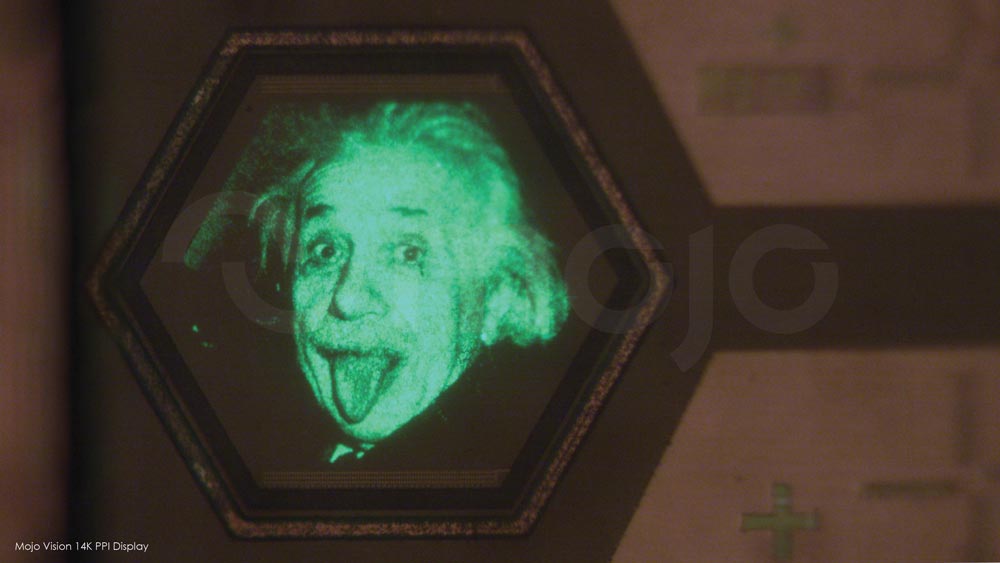
View of the Mojo Lens mini-display: it's as small as a grain of rice. | Image: Mojo Vision
Mojo Lens currently draws its energy from microbatteries used in implant medicine. They are said to provide enough energy for one day during normal use.
Everyday comfort: Lens beats glasses
AR glasses are still held back by the form factor: Even comparatively slim glasses like Nreal Light are still too bulky for everyday use. It is not yet clear how much smaller tech glasses can be.
Wiemer's position, on the other hand, is: "For AR/VR to become more widespread, we need to remove this physical barrier of clunky glasses that cover the face and eyes or peripheral vision."
The goal of Mojo Lens, he says, is "invisible computing," that is, a computer that fits into people's everyday lives completely invisibly as a contact lens in the eye.
"We want to bring people direct access to useful information without the visual distraction or discomfort of glasses," Wiemer says. "We believe contact lenses are the future of wearable computers."
Wiemer is convinced by Mojo Vision's plans, even though large corporations like Google, Facebook and Apple have not yet been able to build elegant AR glasses, let alone a useful technical contact lens. Where does Wiemer get his confidence?
"Because we've already built and worn an early prototype. Our first prototype was worn by more than ten Mojo employees," Wiemer says.
While the endeavor is "no easy feat" and will take some time, he says, "We're at a point in development where we've got more years behind us than ahead of us with an eye toward the first product."
Mojo Lens development: from vision enhancer to VR device
As a first step, Mojo Lens is designed to make everyday life easier for people with low vision. The smart contact lens is designed to accentuate edges, enhance contrast or magnify text.
"Mojo Lens gives people a better map for the environment, objects and people around them," Wiemer says.
In addition, Wiemer sees a benefit on the job: workers could improve their performance with digital information in their field of vision. In everyday life, Mojo Lens could display information to wearers without them having to tilt their heads constantly toward their smartphones.
"Mojo Vision should display relevant, helpful information, and only when you need it," says Wiemer.
Even VR games are a possible application, as the images on the contact lens are still visible when the eye is closed. So instead of putting on a clunky VR headset, you would only have to close your eyes to play a VR game. But that's future talk: Mojo Vision is focusing on an initial product for the medical sector.
Sci-fi AR: Not yet a priority for Mojo Vision
Wiemer therefore doesn't even want to talk about AR visions such as 5G content streaming or a Blade Runner-style digital reality: "We are currently in the process of developing and prototyping Mojo Lens. It's still too early to get into such futuristic details," says Wiemer. But the lens already contains numerous innovations.
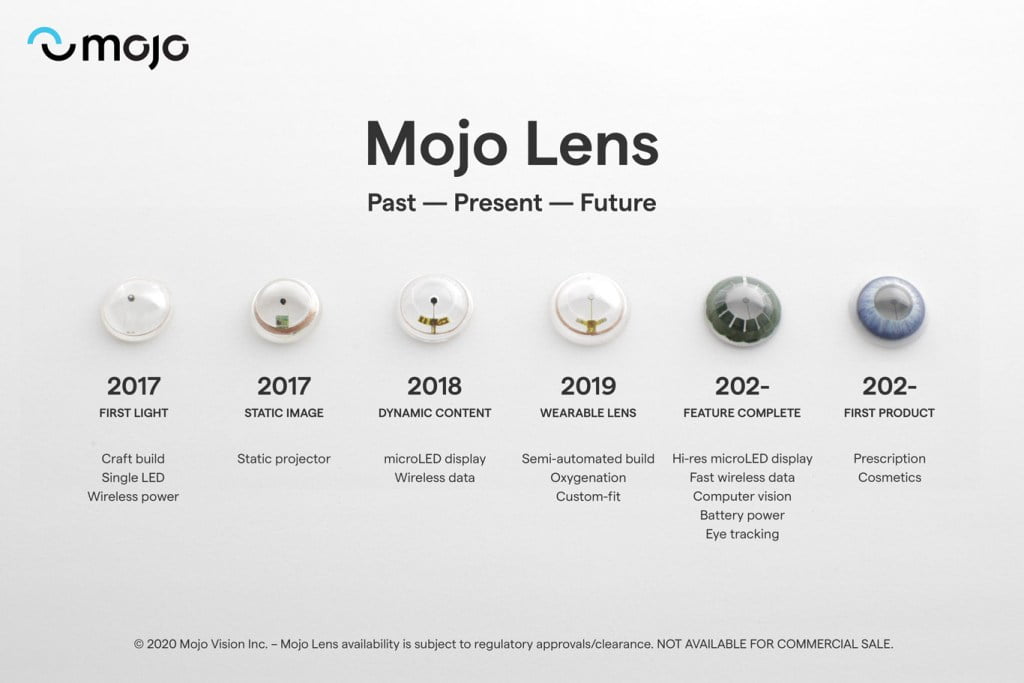
Mojo plans to bring its first commercial lens to market in the next five years. | Image: Mojo Vision
In addition to further developing the technology, Mojo Vision is currently focusing on obtaining medical approval from the U.S. Food and Drug Administration. The startup is in a special program, which could speed up approval. After all, the tech contact lens is also considered a medical device.
The market launch of Mojo Lens is planned in the coming years, initially in the USA. Subsequently, Mojo Vision plans to expand. The exact schedule also depends on the speed of the regulatory authorities.
Mojo Lens: first prototype is “feature complete”
In early April 2022, Mojo Vision unveiled the first "feature complete" prototype of the smart contact lens. It has all the technical features envisaged to date - display, batteries, eye tracking, motion sensors, an ARM0 processor with a 5-Ghz module, and proprietary wireless technology for content streaming.
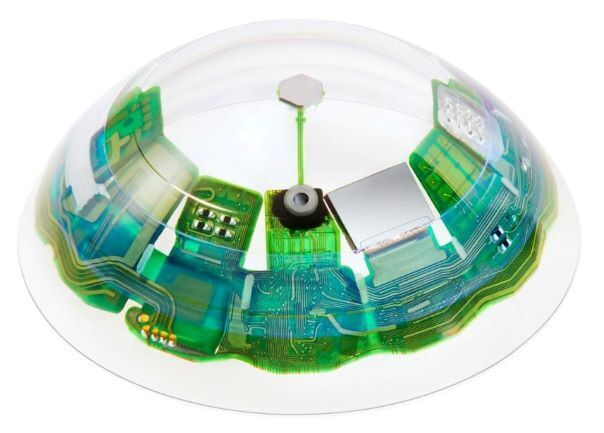
The latest prototype of the Mojo Lens has all the hardware features on board. Now, more testing is planned. | Image: Mojo Vision
The content comes from a separate mini-computer that you put around your shoulders like a neck earpiece. Mojo Vision developed its own ultra-low-latency wireless streaming, which is incompatible with smartphones.
The new prototype also features a rudimentary operating system for the first time and can be controlled by eye gaze. It will be worn and tested for the first time by people outside Mojo Vision.
Mojo Vision still plans to launch the Mojo Lens within the next five years - first for medical purposes, for which corresponding studies are underway, and then for everyday use. The aim is to occupy part of the market for smart glasses with the contact lens.
The Mojo Lens prototype can display content in a 15-degree field of view directly on the retina. Using eye-tracking, the lens detects where the eye is looking and adjusts the image accordingly. Currently, the self-developed display can only show green, the lens does not offer spatial and object recognition. | Video: Mojo Vision
This endeavor will not be easy: In addition to the neck computer as an entry hurdle, Mojo Lens, like any hard contact lens, must be individually measured and manufactured for each buyer. In terms of price, Mojo Lens is likely to end up in the region of high-end smartphones.
Note: Links to online stores in articles can be so-called affiliate links. If you buy through this link, MIXED receives a commission from the provider. For you the price does not change.